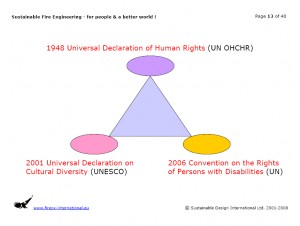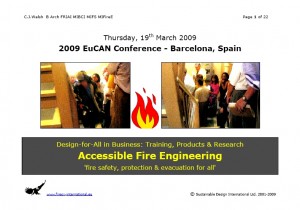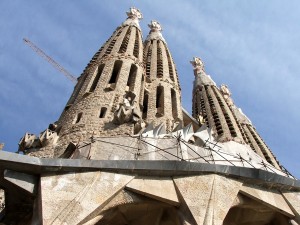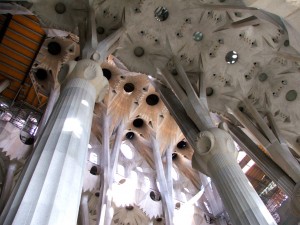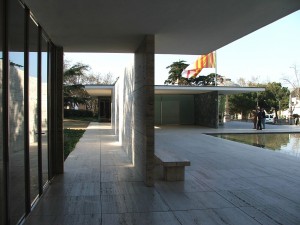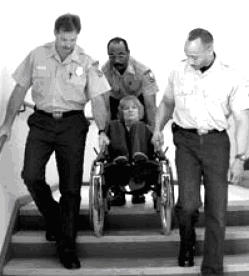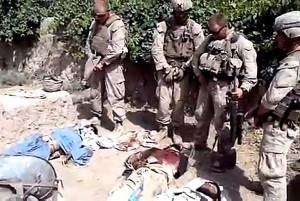2009-05-19: Globalization is not just an economic concept … it is a social reality in the 21st Century …
In discussions about Sustainable Human & Social Development … it is the World Commission on Environment and Development (WCED) and its 1987 (Brundtland) Report: Our Common Future which tends to attract most attention … that is, if people have gone to the trouble of actually reading the report !
However, fast forward to November 2001 … the World Commission on the Social Dimension of Globalization (WCSDG) was created by a decision of the Governing Body of the International Labour Office (ILO), in Geneva, Switzerland. Its brief was to prepare an authoritative report on the social dimension of globalization, including the interaction between the global economy and the world of work.
Later, in February 2002 … Ms. Tarja Halonen, President of Finland, and Mr. Benjamin Mkapa, President of Tanzania, accepted the ILO Director-General’s invitation to act as Co-Chairs of the Commission. Nineteen other members were appointed from across the world’s regions, with a diversity of backgrounds and expertise.
The WCSDG’s Report: A Fair Globalization – Creating Opportunities for All was published in February 2004.
Before the current dark days of global economic crisis, financial meltdown, consumer spending collapse and spiralling unemployment … the WCSDG’s Recommendations might have appeared somewhat radical. Now, however, they are too tame by far …
” We seek a process of globalization with a strong social dimension based on universally shared values, and respect for human rights and individual dignity; one that is fair, inclusive, democratically governed and provides opportunities and tangible benefits for all countries and people.
To this end we call for:
– A Focus on People
The cornerstone of a fairer globalization lies in meeting the demands of all people for: respect for their rights, cultural identity and autonomy; decent work; and the empowerment of the local communities they live in. Gender equality is essential.
– A Democratic & Effective State
The State must have the capability to manage integration into the global economy, and provide social and economic opportunity and security.
– Sustainable Development
The quest for a fair globalization must be underpinned by the interdependent and mutually reinforcing pillars of economic development, social development and environmental protection at the local, national, regional and global levels.
– Productive & Equitable Markets
This requires sound institutions to promote opportunity and enterprise in a well-functioning market economy.
– Fair Rules
The rules of the global economy must offer equitable opportunity and access for all countries and recognize the diversity in national capacities and developmental needs.
– Globalization with Solidarity
There is a shared responsibility to assist countries and people excluded from or disadvantaged by globalization. Globalization must help to overcome inequality both within and between countries and contribute to the elimination of poverty.
– Greater Accountability to People
Public and private actors at all levels with power to influence the outcomes of globalization must be democratically accountable for the policies they pursue and the actions they take. They must deliver on their commitments and use their power with respect for others.
– Deeper Partnerships
Many actors are engaged in the realization of global social and economic goals – international organizations, governments and parliaments, business, labour, civil society and many others. Dialogue and partnership among them is an essential democratic instrument to create a better world.
– An Effective United Nations
A stronger and more efficient multilateral system is the key instrument to create a democratic, legitimate and coherent framework for globalization.”
Sustainable Economic Development means … Economic Development which is compatible with Sustainable Human & Social Development !
That was the easy part … but try explaining it to economists ?!?!
Sustainable Globalization … much more than an economic concept, but a social reality in our time … means Globalization which is also compatible with Sustainable Human & Social Development … each co-existing with the other in harmony and dynamic balance … and – together – providing a high level of Social Wellbeing for All.
Unfortunately … while economists can readily understand Individual Welfare …
a person’s general feeling of health, happiness and fulfilment
… they are not familiar with the concept of Social Wellbeing …
a general condition – in a community, society or culture – of health, happiness, creativity, responsible fulfilment, and sustainable development.
Please help your local economist !
.
.
END


